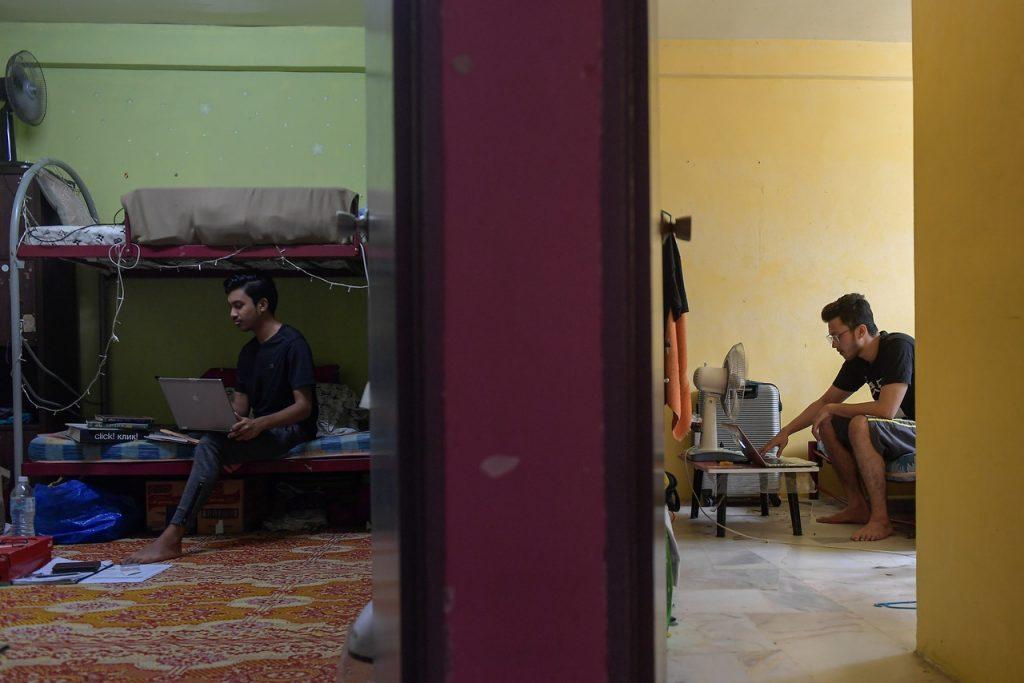Imagining new learning spaces for online higher education
An active process of stakeholder engagement is essential in adapting to online study and developing value innovators that enhance learning and teaching in higher education.
Just In
The Covid-19 pandemic has hit all sections of society hard. In particular, higher education institutions (HEI) have faced severe disruptions not just to access to campuses but to the learning and teaching processes at the very heart of our core mission.
With campuses closed for extended periods the whole higher education community, including students, faculty and university managers, have faced huge challenges in responding to the demands of online teaching and learning. It is important for leaders and managers in higher education to recognise these challenges and to understand how we can respond positively to the needs our most important stakeholders – our students and our faculty.
The biggest challenge has been the struggle to adapt. Switching from traditional classrooms and face-to-face learning to computer-based study in a virtual classroom makes the learning experience entirely different for students. It also makes the teaching experience entirely different for faculty members, most of whom have no training, experience or appetite for this disruption to their normal approach.
Motivational issues have also posed huge challenges. Self-motivation is an essential requirement for e-learning but many online learners lack it, much to their surprise. After enrolling in distance learning courses, many learners fall behind and nurture the idea of giving up.
Difficulties in handling self-directed learning and new technological media also seem insurmountable. Often academic staff are equally baffled and overwhelmed and face similar motivational challenges as our students.
Contrary to many claims by university leaders, students have found it hard to spring into action. They have faced challenges in accepting and even accessing course material in a wide variety of unfamiliar, multimedia formats and often they do not enjoy taking part in online discussions which can continue indefinitely.
It has also been difficult for many to focus on their work in an unstructured environment with new scheduling protocols where classes are often just a date posted on a learning management system. Staying on top of their work has also been difficult for many since they are often not required to go to a classroom with an assignment prepared. There is also an increasing reliance on audio-visual material which can be consumed passively like an online movie.
These challenges are part of the learning process that everyone in the higher education community is trying to accommodate and they must be recognised as part of the situational analysis to help us devise new strategies. Fortunately, new learning spaces are paving way forward in higher education at many universities including MUST.
The internet of things is helping us develop “smart classrooms” which allow teachers to share feedback, results and observations with students and other stakeholders in real-time.
Augmented reality and virtual reality technologies allow us to explore immersive learning which aims to create total clarity around the subject in question to improve the experience of the learning process so that students do not forget the knowledge derived from teaching and learning sessions.
Gamification uses technology to mingle learning with playing so that together they create an immersive educational experience for students to learn even the toughest of exercises and instructions.
Personalised learning allows students to pursue the learning options that suit their individual requirements, aptitudes and appetites. Adoption of blended learning and adaptive learning leverage technology enable a more individual approach for those students who need more attention and special treatment.
Our research also suggests that the most popular programmes will offer credible certificates at value for money prices which can be obtained either quickly or within flexible schedules that suit student timescales and career aims. Creative attention must be paid to developing virtual versions of the value-drivers of traditional programmes such as networking, career counselling and extra-curricular activities and this must be done within an inclusive stakeholder process rather than a top-down approach.
Most importantly during these challenging times it is essential that leaders and managers in the higher education community reach out and listen to the needs of our students and faculty rather than dismiss them as troublesome complainers. Through an active process of stakeholder engagement we can develop value innovators to enhance learning and teaching options based on a shared understanding of the challenges we all face.
Positive leadership and engagement process like this, which are after all what we teach in our management classes, provide the raw data and materials to imagine and create new learning spaces for online higher education.
An inclusive process using exciting technologies also helps adaptation to change and improves the chance of successful implementation of new ideas in the classroom so that they are not disruptive but proactive and positive enhancements to student experiences and which improve learning outcomes. This makes the shift to online learning an exciting journey of discovery rather than a forced march to mediocrity.
Professor Premkumar Rajagopal is president of the Malaysia University of Science and Technology (MUST) and Professor Geoffrey Williams is an economist and specialist in higher education management in the business school at MUST.
The views expressed in this article are those of the author(s) and do not necessarily reflect the position of MalaysiaNow.
Subscribe to our newsletter
To be updated with all the latest news and analyses daily.
